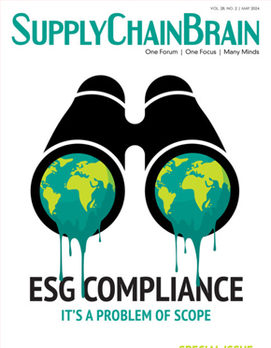
One of the earliest references to “supply chain” as a job or discipline appeared in a 1992 article in Harvard Business Review. Before then, we talked of the various roles within it: logistics, procurement, scheduling, inventory management, etc. These important functions were then still disbursed in most organizations. In the years since, many companies have integrated them into a supply chain organization under the guidance of a single C-suite executive.
In their 1992 article, the authors listed eight competencies for leaders in the emerging supply chain function:
- Capacity planning,
- Demand management,
- Order processing,
- Master production scheduling,
- Inventory management and optimization
- Materials replenishment planning,
- Logistics, warehousing, and distribution, and
- Knowledge of continuous improvement processes and methods.
Over the past few months, I’ve spoken with several top supply chain leaders to gain their perspective on what’s next, and the emerging competencies that will be needed in the chief supply chain officers of the future. It boils down to four emerging competencies:
- Strategic information technology use,
- Alliance builder,
- Resilience architect, and
- Global social responsibility.
Let me expand a bit on each of these emerging competencies.
Information technology strategist. Every supply chain leader I spoke with mentioned information technology as a growing component of the job, and a source of both excitement and concern for the future. Whether it’s blockchain, telemetrics, analytics, robotics or the internet of things in manufacturing, the application of digital technology to the supply chain is a key challenge for the future. One supply chain leader at an international mining company described choosing among the possible I.T. initiatives as the key challenge of her role.
Alliance builder. Shaunna Black, an early leader in building supply chain expertise and practices at Texas Instruments, traces the evolution of the role of alliances beginning in the early 2000s. She was in Korea leading a semiconductor operation when, on March 11, 2011, a magnitude 9 earthquake hit northeastern Japan, causing a tsunami that shut down the world’s key supplier of photoresist, a critical component for her company. Shaunna told me about the worldwide cooperation of manufacturers, suppliers, and distributors that resulted in only minimal disruption in the delivery of crucial semiconductors to customers. This was possible because of years of work in building productive alliances in the entire semiconductor supply chain. The need for such collaboration and the alliances on which it rests will only grow.
Resilience architect. The collaboration that Shaunna described arose from years of building collaborative relationships in the global semiconductor supply chain. In his book The Power of Resilience: How the Best Managed Companies Manage the Unexpected, MIT’s Yossi Sheffi describes the rising vulnerability on all sides of the supply chain: more distance, more players, more variety, more technology, more complexity. Companies must look to their chief supply chain officers to ensure that the supply chain is resilient to disruption. For many businesses, supply chain disruption is the largest operational risk.
Social responsibility shareholder. The notion that companies have social responsibilities has been growing. In the last roughly 15 years, social responsibility has expanded to include a company’s supply chain. Tragedies such as the Rana Plaza building collapse in Bangladesh, where more than 1,000 people died, not only disrupt supply chains, they damage reputations and destroy brand equity and shareholder value. Twenty-three years ago, Life magazine featured a photo of a Pakistani boy sewing a Nike soccer ball. The story inside reported that he made six cents per hour. A “Boycott Nike” campaign ensued, and the company lost more than half its market capitalization within a year. It took six years to regain that lost value. In the years since Rana Plaza, many companies have moved aggressively on multiple fronts to build supply chains that stand up to the increasingly strict standards of social responsibility. While no executive can shoulder this whole burden for a company, chief supply chain officers have a large share in understanding the myriad risks and building supply chains that their companies can be proud of.
Our expectations of a supply chain leader have grown dramatically in a generation. From those eight largely functional competencies in the Harvard Business Review in 1992 to a key strategic leader in 26 years is quite an evolution. Finding and developing supply chain leaders will be crucial in the years ahead, especially considering the emerging competencies.
Don Townsend is president of Donley Townsend Associates LLC.




.jpg?height=100&t=1715228265&width=150)


